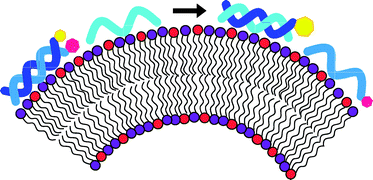Enhanced DNA strand exchange on positively charged liposomes
Abstract
The mechanism of DNA strand exchange, performed in vivo by

* Corresponding authors
a Department of Chemical and Biological Engineering/Physical Chemistry, Chalmers University of Technology, SE-412 96 Gothenburg, Sweden
b Department of Chemistry and CSGI, University of Florence, via della Lastruccia 3-Sesto Fiorentino, 50019 Florence, Italy
c
Nano-Science Center and Department of Chemistry, University of Copenhagen, Copenhagen E, Denmark
E-mail:
fredrik@nano.ku.dk
Fax: +45-35320406
Tel: +45-35320483
The mechanism of DNA strand exchange, performed in vivo by

 Please wait while we load your content...
Something went wrong. Try again?
Please wait while we load your content...
Something went wrong. Try again?
K. Frykholm, F. Baldelli Bombelli, B. Nordén and F. Westerlund, Soft Matter, 2008, 4, 2500 DOI: 10.1039/B806569A
To request permission to reproduce material from this article, please go to the Copyright Clearance Center request page.
If you are an author contributing to an RSC publication, you do not need to request permission provided correct acknowledgement is given.
If you are the author of this article, you do not need to request permission to reproduce figures and diagrams provided correct acknowledgement is given. If you want to reproduce the whole article in a third-party publication (excluding your thesis/dissertation for which permission is not required) please go to the Copyright Clearance Center request page.
Read more about how to correctly acknowledge RSC content.
 Fetching data from CrossRef.
Fetching data from CrossRef.
This may take some time to load.
Loading related content
